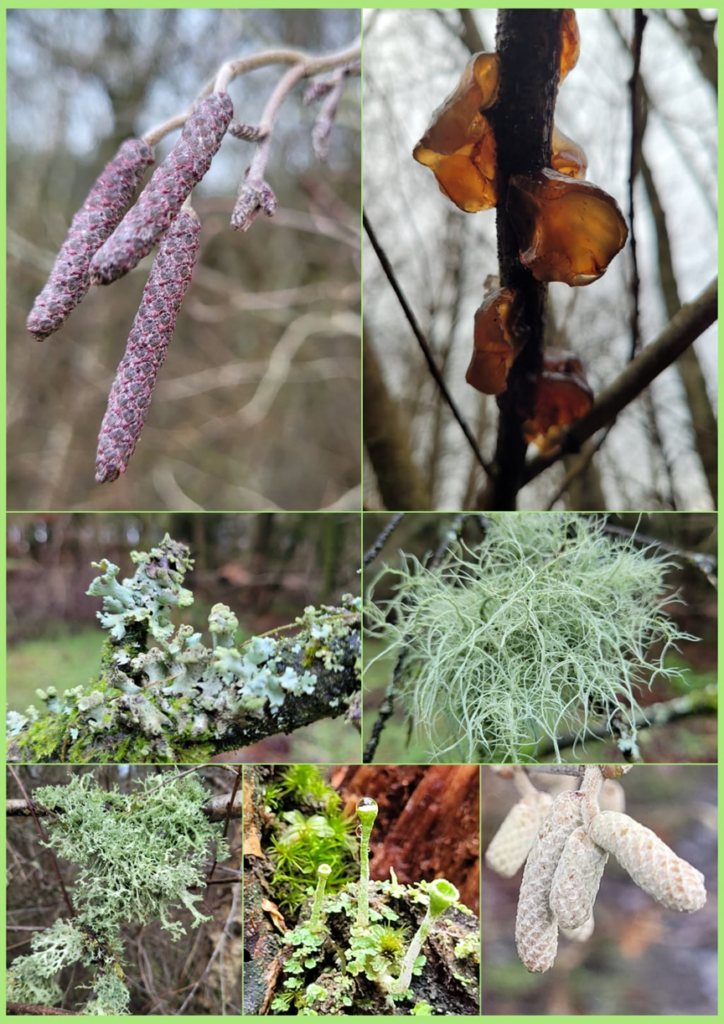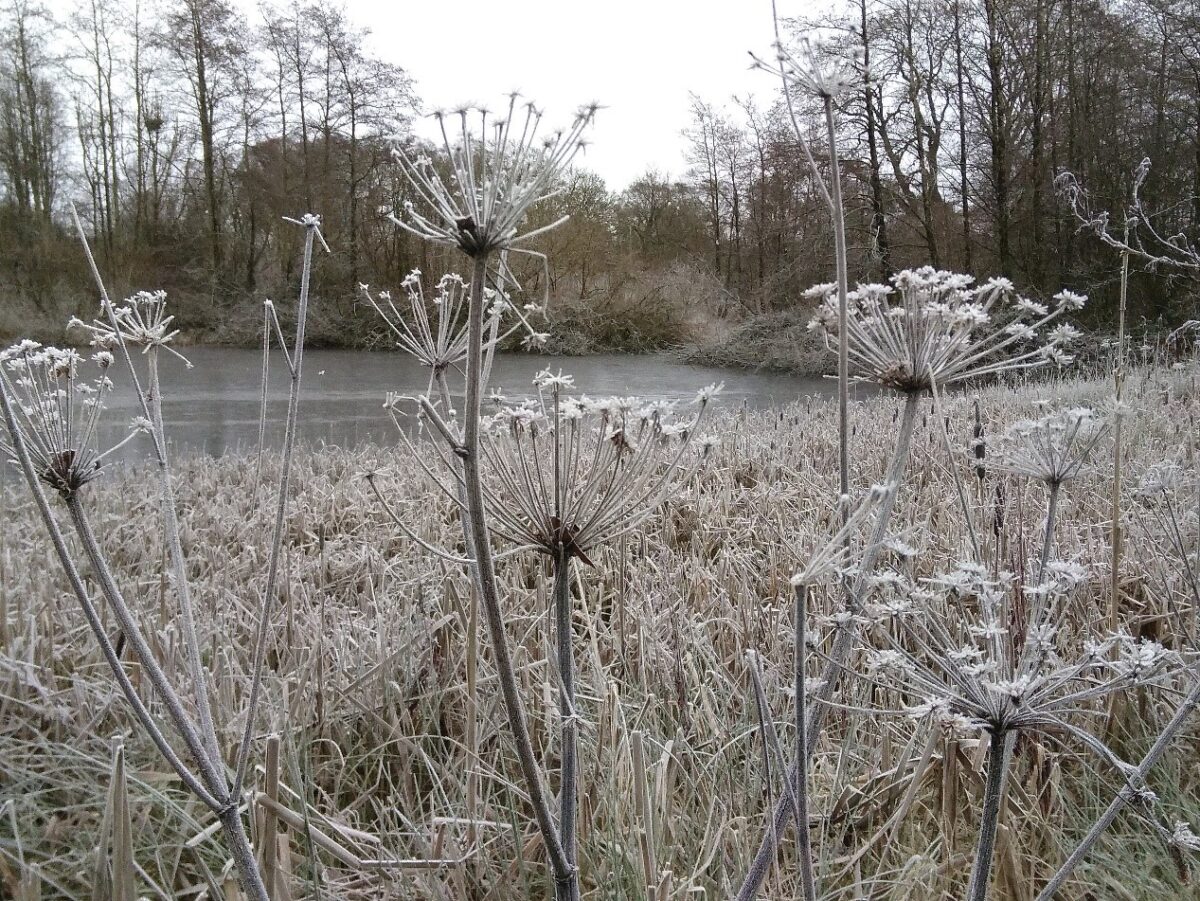Even in winter there’s lots of birds in the wood, making the most of the seed heads and rosehips – bluetits, robins and wrens are around most mornings even on the coldest days. Although when it came to the RSPB’s Big Garden Bird Watch at the end of January they all hid away from the strong winds. The ducks were around though and we saw a group of redwings in the field and a heron hunkering down in the bullrushes at the edge of the pond.

The winter storms brought down an old ash tree onto the path – and several other small trees in the middle of the wood and at the back of the pond. Just on the edge of the wood a large beech tree split and fell. When they fall in the middle of the wood it’s a good way to thin things out and create new habitat for insects and fungi. But when they fall across the path then they need to be cleared.


Amber Jelly is mainly a winter fungus, appearing on dead twigs of standing or fallen willows. We found some near the aspen’s at the back of the pond. Nearby was a bright orange fungus on a fallen birch tree – possibly yellow brain.
This was a good year for hair-ice. For a few weeks in December and January it seemed to be everywhere. Apparently “hair ice is formed at a particular temperature between latitudes of 45 and 55 degrees, during a particular time of day and on a particular type of wood, which must be free of bark.”

I think we’ve only had one day of snow this winter and only a couple of spells of really cold weather. There was one week in January that got down to -9C and the river started to freeze over.

When there’s no leaves on most of the trees, the evergreens are much more noticeable. There’s quite a lot of holly dotted about the woods, but all still quite small. In ten years’ time they’ll be an impressive sight on a winter walk.

By the start of February the sun is starting to feel a little stronger, the catkins and pussywillow are out. Last March we planted 6,000 snowdrops and it’s been wonderful to see them come up over the past couple of weeks. This morning I saw a jackdaw chase a squirrel down a beech tree. The tawny owls and barn owls are about and we’ve even spotted a brief, brilliant blue flash of a kingfisher on the river.

